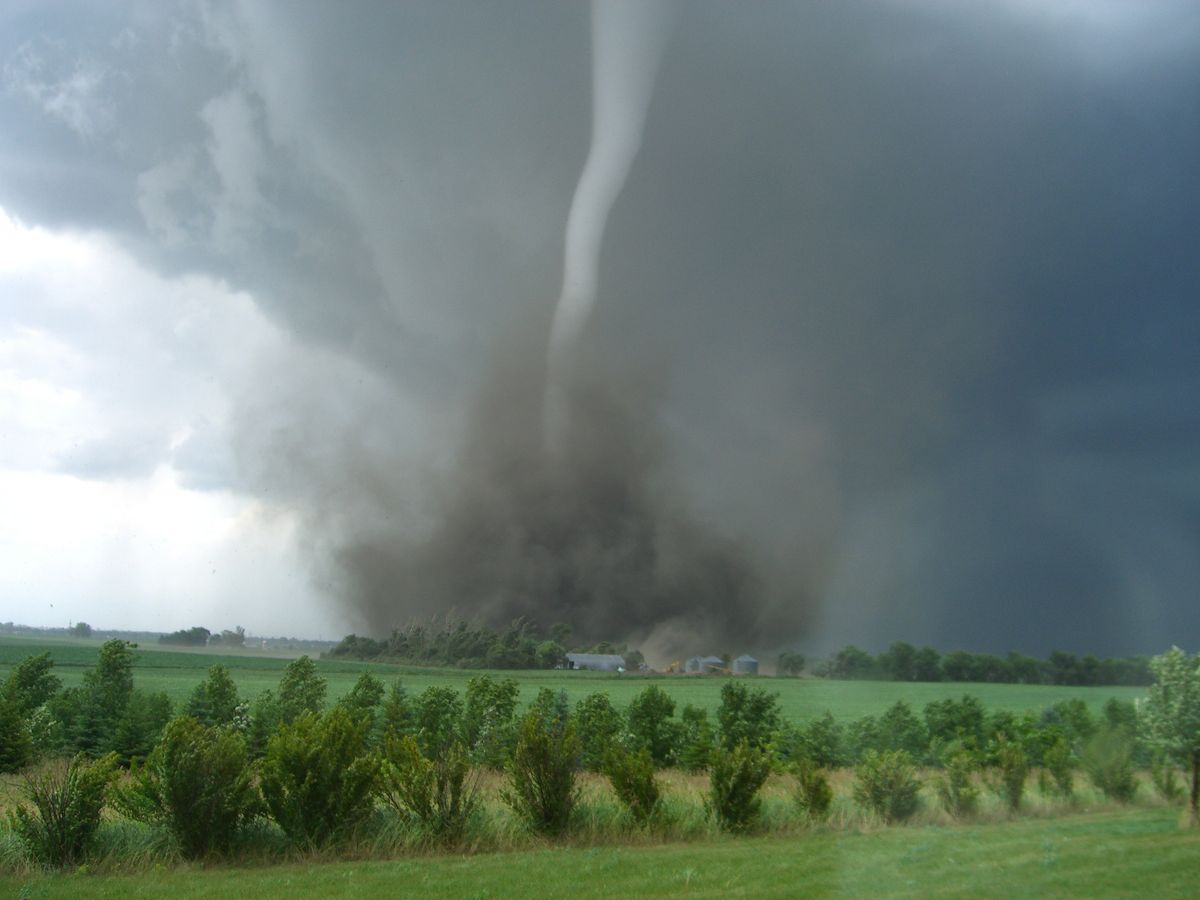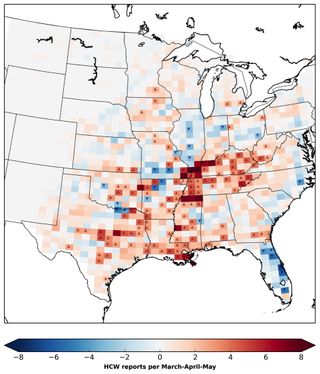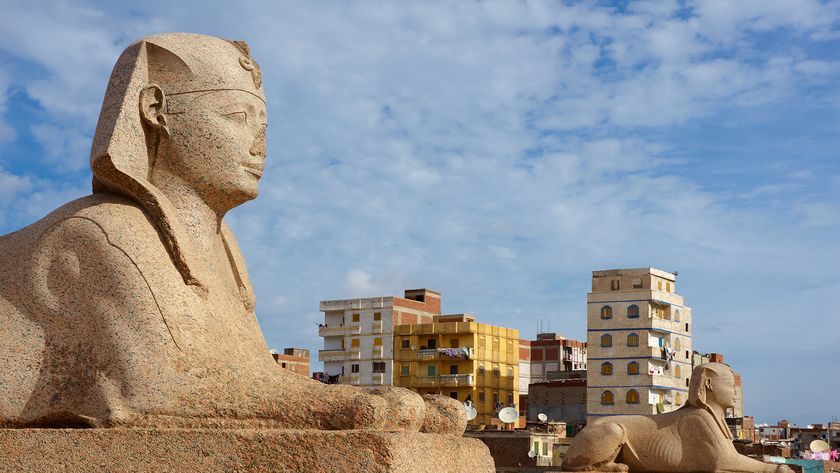Global Warming May Spawn More Southeast US Tornadoes

The same loopy weather patterns directing California's ongoing drought and last year's deep freeze across the East Coast may also change how often tornadoes strike the southeastern United States, a new modeling study finds.
Researchers examined how global warming will affect severe weather during the heart of tornado season — March, April and May. They found that while the yearly tornado total will climb by 2080, the number of tornadoes will also vary wildly from year to year. That's because sometimes, the weather will get stuck in a pattern that favors tornadoes, and sometimes, conditions will stymie stormy weather, according to the report, published Jan. 15 in the journal Climatic Change.
"We see this trend in a lot of extreme weather," said lead study author Victor Gensini, a severe storms climatologist at the College of DuPage in Illinois. "Changes in the jet stream are causing the jet to break down and get stuck in these blocking patterns," Gensini said. "It just so happens it could be in a favorable pattern for tornadoes or a really bad pattern [for tornadoes]." [The Top 5 Deadliest Tornado Years in U.S. History]
In the future, tornado season will also peak earlier, in March instead of May, the study reported. The number of tornadoes in April will rise slightly, while May's total twister count will stay the same.
"Because of increasing temperatures, we'll have more [atmospheric] instability earlier in the year, and instability is the fuel for tornadoes," Gensini said.
Typically, climate models can't predict how global warming will affect tornadoes because the storms are smaller than the resolution of climate models. But Gensini's approach relies on a relatively new weather forecasting model that can recreate the hazardous storms that generate tornadoes, hail and damaging winds.
"This is a model that can see thunderstorms, and climate models don't know anything about thunderstorms," said Harold Brooks, a senior scientist with the National Severe Storms Laboratory in Norman, Oklahoma, who was not involved in the research.
Sign up for the Live Science daily newsletter now
Get the world’s most fascinating discoveries delivered straight to your inbox.

Two major factors control the birth of a tornado: convective available potential energy, or CAPE, and vertical wind shear. The available potential energy relates to warm, moist air at low altitude and cold, drier air above. Combined with wind shear — big changes in wind direction and speed with height — these conditions can spawn rotating air that triggers a tornado.
The new model predicts that these severe weather conditions are more likely to occur in the future, at least during the months of March, April and May. The increases are seen primarily across the Mississippi, Tennessee and Ohio River valleys. Only northern Florida will see a drop in severe weather, the study reported.
"It will be really unlikely to get a tornado in Florida in March, April or May," Gensini said.
At this time, the researchers don't know if the total number of tornadoes will shift during other months, Gensini said. Tornadoes can strike at any time during the year.
The variability from year to year is "a really intriguing result," Brooks said. A study published last year by Brooks found that tornado years are more variable than they used to be, and tornadoes cluster together more often.
In 2011, there were 1,894 tornados — many of them deadly, including the Joplin, Missouri, twister that killed 161 people. That tornado total was followed by a sharp decline, with 1,119 tornadoes in 2012; 943 in 2013; and 1,057 in 2014, according to the National Weather Service.
Follow Becky Oskin @beckyoskin. Follow Live Science @livescience, Facebook & Google+. Originally published on Live Science.












